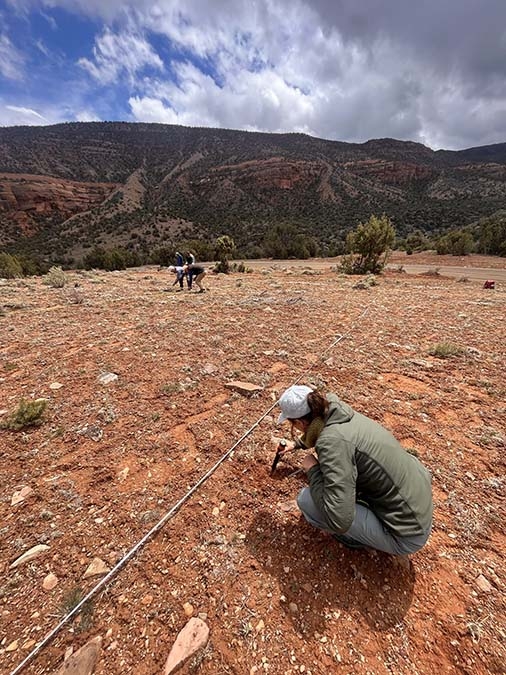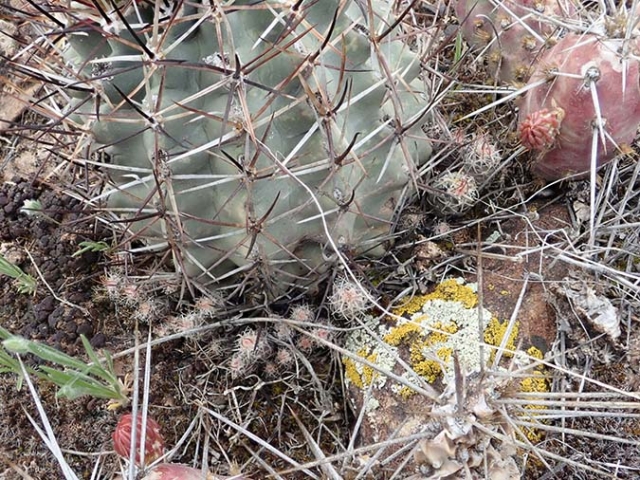Conserving Sclerocactus glaucus After Delisting
In 2008, Denver Botanic Gardens initiated demographic monitoring of Sclerocactus glaucus, a small ball cactus found only in western Colorado. The cactus had been listed as threated on the Endangered Species act since 1979. By 2006, the cactus was petitioned for delisting but population size estimates at the time were far below the threshold for recovery and scientific data was lacking to show that there were not natural or manmade threats to the populations.
Our annual monitoring of hundreds of individual plants across 10 sites allows us to measure germination, survival and reproductive rates. We found that populations were stable despite periods of drought and rising temperatures and despite disturbances from oil and gas development. While we were studying the effects of threats to the populations, the Bureau of Land Management was trying to get a better sense of population size. They found that minimum population size estimates were far above the threshold set for recovery. We also collaborated with Dr. Mit McGlaughlin of the University of Northern Colorado to understand how genetic diversity was partitioned among populations and found differences between northern and southern populations. Taken together, this current scientific data led the U.S. Fish and Wildlife service to recommend delisting of Sclerocactus glaucus in 2021.

Research staff and volunteers conducting demographic monitoring of Sclerocactus glaucus populations.
However, the recommendation of delisting does not end the need for our monitoring. Instead, delisting raises additional questions about the future of this cactus. First, will continued climate change and changing land use reach a point where the number of cacti fall below the recovery threshold? Second, if populations do decline, what are the mechanisms driving population declines and how can they be addressed? And lastly, how will climate change impact the habitat and vegetative community that supports S. glaucus?
To estimate the total size of populations, we tested a plotless monitoring design typically used for animal populations. This method is fast and can be repeated annually. Our demographic data tells us which life stages are impacted by climate drivers and what changes in survival and reproductive rates will mean for future population dynamics. In 2021 we began to look at seed dispersal and diversity of species in the soil seed bank to understand how S. glaucus and the surrounding vegetation will respond to climate change. Combined, these analyses will prepare us to detect population declines in time to take appropriate conservation actions.

Sclerocactus glaucus seedlings
Add new comment